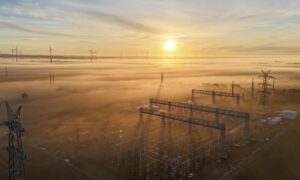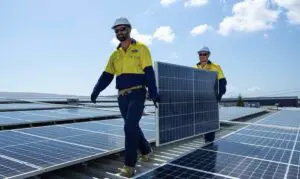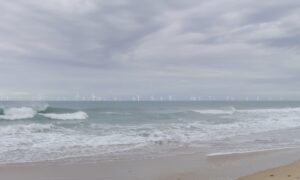 The Australian Labor Party announced on 22 July 2015 that it will be taking a policy of 50 per cent renewables market share by 2030 to the next election. This will be a key element of their climate change policy. This compares to recently amended legislation that is expected to deliver a renewables market share of 23.5 per cent by 2020. On the surface such an increase looks challenging.
The Australian Labor Party announced on 22 July 2015 that it will be taking a policy of 50 per cent renewables market share by 2030 to the next election. This will be a key element of their climate change policy. This compares to recently amended legislation that is expected to deliver a renewables market share of 23.5 per cent by 2020. On the surface such an increase looks challenging.
We have assessed the implications of what a 50 per cent target might mean and what it might look like if it was legislated through changes to the Renewable Energy Target (RET) legislation. We have also considered how difficult it might be to achieve.
It turns out that such a target could be achieved by simply maintaining the rate of renewable energy installations we are already on track to undertake to meet the government’s 2020 target. In addition the total amount of capacity required is in line with the amount of projects already identified and under development according to a Government survey. In addition the amount of rooftop solar PV envisaged should be readily accommodated given the availability of suitable roof space on commercial and residential premises.
To determine the market share of renewable energy in the electricity market we need to consider the total level of renewable generation including the contribution of small-scale solar. Small-scale solar is seen by the electricity market as a reduction in consumption rather than as a source of generation. We also need to consider the level of pre-existing renewables, largely hydro that was in place prior to the RET, which will continue to operate into the future. Finally we also need to consider the future level of electricity consumption and generation.
In previous analysis we have estimated that pre-existing renewable generation amounted to 13,500 GWh. This is predominantly large scale hydro projects which are expected to continue to operate well into the future.
The current 33,000 GWh large-scale target will require construction of 5,400 MW of new projects over the next four years (approximately 1350 to 1500 MW per annum).
Based on Clean Energy Regulator data, approximately 4,000 MW of small-scale solar PV had been installed to the end of 2014 and were supported by the Small-scale Renewable Energy Scheme (SRES). Over the last two years installations have averaged 800 MW.
If we assume that the SRES will be maintained and continue to support 800 MW per annum of small-scale installations then a total of 8,800 MW will be installed by 2020 and 16,800 MW installed by 2030. Small-scale solar PV will therefore be expected to generate 12,200 GWh by 2020, increasing to 23,200 GWh by 2030.
To determine the additional large-scale renewable generation required to meet 50 per cent electricity market share we need to consider future electricity consumption. Electricity consumption has been falling in the National Electricity Market over the last five years and is expected to stabilise this year with the addition of considerable load in Queensland due to LNG exports. It is reasonable to expect that energy efficiency measures will also form part of any climate policy response and we have therefore assumed that electricity consumption will fall by 1 per cent per annum from 2020 onwards.
To achieve a 50 per cent market share by 2030 will require an additional 1400 MW of large-scale projects coming on line each year over the 10 year period to 2030. This means an additional 14,000 MW of capacity beyond that which is required to meet the current 2020 Target.
The build-up in the components of renewable energy to meet the 50 per cent target are summarised in the following chart. This analysis is based on the continuation of the current level of installation of small-scale solar PV and a continuation of the build rate for large-scale renewables required to meet the 33,000 GWh target by 2020.
The specific figures for 2020 and 2030 are summarised in the following table.
There is no doubt that we have the renewable resource base to achieve a 50 per cent renewables target. The Bureau of Resources and Energy Economics in their November 2014 report on “Electricity Generation Major Projects” identified that there were more than 15,000 MW of renewable energy projects under assessment.
The total capacity of large-scale renewables projects that need to be built by 2030 is approximately 19,500 MW. Most of what we need to build has already been identified and is under development. An average build rate of 1400 MW each year (approximately $2.8 billion per annum) is not that difficult given that we need to build at this rate to meet the 2020 target.
In terms of small-scale solar PV, installation rates are currently running at 800 MW per annum with consumer investment of approximately $1.6 billion each year. This comprises 23 per cent commercial sized systems and 77 per cent residential. A total of 1.4 million solar PV systems had been installed at the end of 2014 which amounted to 16 per cent of total residential dwellings.
If we only considered owner-occupied detached and semi-detached dwellings then the penetration rate would amount to 23 per cent. At present 140,000 residential PV systems are being installed each year. If we continued at this rate to 2030 then a total of 3.64 million dwellings would have solar PV. We are currently building more than 110,000 new stand-alone houses each year so that by 2030 the penetration of solar PV would double to 46 per cent.
Solar PV has a very small level of penetration in non-residential dwellings and continuing the current level of installations to 2030 would still only access a fraction of business roof space. This market sector is in all likelihood expected to continue to grow.
Achieving 50 per cent renewables market share by 2030 is clearly possible given Australia’s resource base and installation capability. It will require the investment of $4.4 billion per annum across the small-scale and large-scale renewables sector. This could readily be mobilised with the appropriate policy settings.










